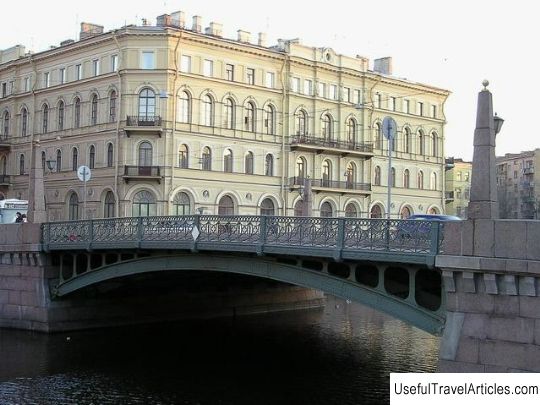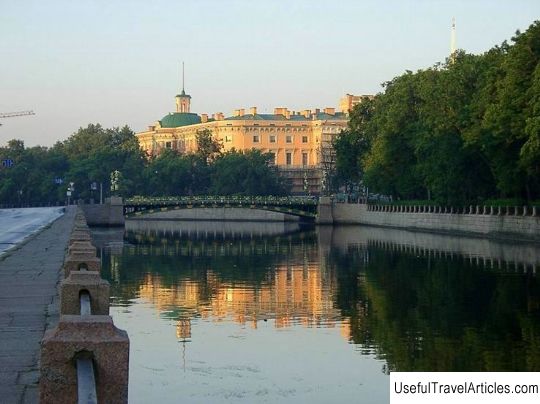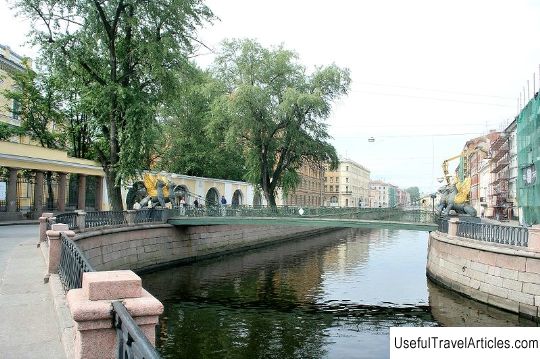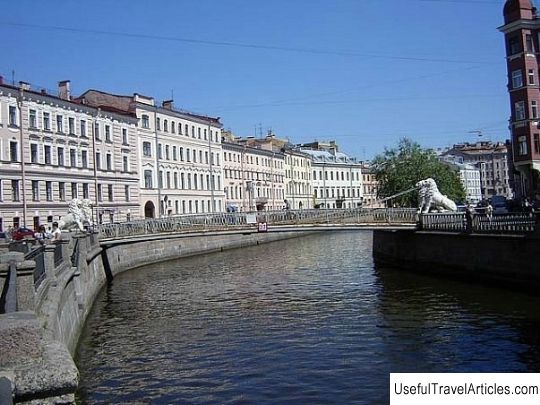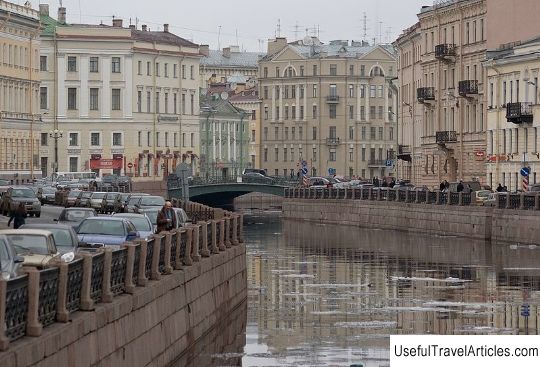Pochtamtsky Bridge description and photo - Russia - St. Petersburg: St. Petersburg
Rating: 8,2/10 (2432 votes) 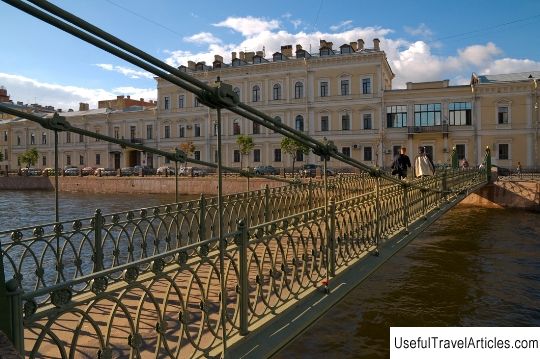
Pochtamtsky Bridge description and photos - Russia - St. Petersburg: St. Petersburg. Detailed information about the attraction. Description, photos and a map showing the nearest significant objects. Photo and descriptionOriginally a wooden four-span girder bridge with intermediate supports across the Moika River in Prachichniy lane was built at the end of the 18th century. After a few decades, this bridge fell into disrepair, which caused an urgent need to replace it. At the beginning of the XIX century. engineers V.L. Khristianovich and G.M. On the site of the collapsed bridge, Tretter began the construction of a new pedestrian crossing - a chain bridge. The construction lasted almost a year, and at the beginning of August 1823 the bridge was put into operation without warning: the townspeople, without waiting for the completion of construction, began to cross the Moika along the unfinished bridge. Such structural elements of the bridge as the railings were not installed at that time, and the bridge was being completed during operation. Initially, the crossing was called the Small Chain Bridge, since 1829 - the Chain Pedestrian Bridge, and since 1849 - the Laundry Bridge. The current name - Pochtamtsky Bridge - appeared in 1851. It originated from the Central Post Office and the Yard of Post Coaches located nearby. The Pochtamtsky Bridge is interesting in that the elements of its construction are not “hidden” in decorative statues, like at the Lion and Bank bridges, but are open for viewing. The pillars of the new Pochtamtsky Bridge were made of rubble masonry and faced with granite, making up a single whole with the embankment walls. The pillars of the bridge for fastening the chains had cast-iron obelisks, ending in gilded bronze balls. The obelisks were kept in equilibrium by cast-iron arches (quadrants) located on the side opposite to the bridge canvas. The arches and obelisks were held in place by anchor bolts deeply embedded in the masonry. Wooden spans were suspended on wrought iron chains and attached to the coastal supports by hinges with special locks. A wrought iron artistic lattice was installed as the fence of the bridge. All cast iron and metal components were manufactured at the plant by K.N. Byrd. The specialists of this plant have put together all the elements of the bridge. The artistic solution of the lattice is simple: ovals with bronze rosettes at their intersections. A belt made of repeating rosettes wraps around the top edge of the grille. During the operation of the Pochtamtsky Bridge, shortcomings of its design very quickly appeared: defects caused the flooring to sag and three of the four pylons tilt towards the river. In 1901-1902, the cast-iron grating was replaced with a lighter one, but this could not prevent further deformation of the structure. After the collapse of a similar Egyptian bridge, it was decided to reconstruct all such crossings. Designed by engineer B.V. Two wooden supports were placed under the Pochtamtsky Bridge, the chains and pylons ceased to be of constructive importance, becoming exclusively decorative elements. In 1953, the wooden spans were replaced with metal ones, the supports were decorated with boards. Designed by engineer P.P. Stepanov in 1956, new cast iron railings were installed on the Pochtamtsky Bridge, and engineers R.R. Shipov and B.E. Dvorkin, in 1981-1983, the bridge was restored to its original appearance: the intermediate supports were removed, the spans were replaced and the bridge was restored to its original form - as a suspension one. In 2002, one of the chains supporting the bridge was broken. Investigation showed that a car was passed over the pedestrian bridge. With a bridge width of 2.2 meters, it is technically possible to do this. The bridge was repaired the following year, and in order to increase the design load, new chains were installed, stronger than the previous ones.     We also recommend reading Monument to Leonid Bykov description and photo - Ukraine: Kiev Topic: Pochtamtsky Bridge description and photo - Russia - St. Petersburg: St. Petersburg. |
